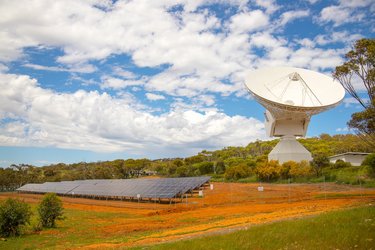Eyeing the home planet
Earth and its environment are routinely probed, measured, analysed and photographed by an international fleet of satellites. Now the International Space Station is set to join the constellation.
For many astronauts, the most amazing experience of their spaceflights is seeing the fragile blue globe silently turning beneath them.
With the changing lighting conditions and passing seasons, it rarely looks the same.
Sand storms sweeping across the US midwest, low-pressure areas bringing rain to northern Europe and typhoons hitting Japan – all can be easily seen from the orbital outpost.

But more profound changes to Earth and its climate can be observed by instruments mounted on the Space Station. ESA is launching an initiative to develop sensors that will help us to understand climate change.
This is one of many new areas where the Station, now fully assembled, will benefit science and technology.
So far, European research has focused on life and physical sciences, but now the Station’s full capability will be exploited for astrophysics, solar science, fundamental physics and Earth observation.
Global climate change

Our atmosphere, oceans and land change naturally over the years and centuries. In the past few hundred years, our activities have significantly affected our environment, including increasing greenhouse gases, spreading deforestation and sea levels rising as the ice caps melt.
It is crucial that we understand how the changes caused by us are interacting with natural effects so that we can predict future changes.
This information will help us to minimise our effect on the environment and limit society’s vulnerability to global climate changes.
ESA’s many observation satellites carry sensors dedicated to monitoring climate change. The Space Station will join forces with them by covering the tropics and most of the mid-latitudes.
Using the Station

ESA’s call for ideas in 2009 brought 45 promising ideas and confirmed a high level of interest from climate change scientists.
The Space Station offers many possibilities for observing Earth. Europe’s Columbus laboratory module has an external platform that carries sensors to look down, up or sideways.
The Cupola bay window is a unique viewing platform for photography and for mounting small instruments.
ESA is already developing a payload of interest to climate scientists: the Atmosphere Space Interactions Monitor will be attached to Columbus in 2014 to help us understand the high atmosphere.
Call for ideas

Proposal instructions, forms and supporting documents are available on an Announcement of Opportunity page.
Deadline for submission of letters of intent is 9 September 2011 and for proposals 4 November 2011.
Contact for further information:
Jason Hatton
HSO-AS/ESA-ESTEC
E-mail: iss-climatechange@esa.int
Tel: +31 71 565 4059















 Germany
Germany
 Austria
Austria
 Belgium
Belgium
 Denmark
Denmark
 Spain
Spain
 Estonia
Estonia
 Finland
Finland
 France
France
 Greece
Greece
 Hungary
Hungary
 Ireland
Ireland
 Italy
Italy
 Luxembourg
Luxembourg
 Norway
Norway
 The Netherlands
The Netherlands
 Poland
Poland
 Portugal
Portugal
 Czechia
Czechia
 Romania
Romania
 United Kingdom
United Kingdom
 Sweden
Sweden
 Switzerland
Switzerland




























